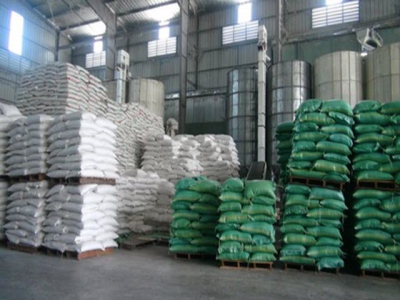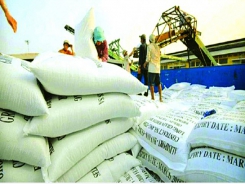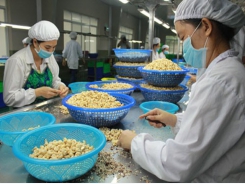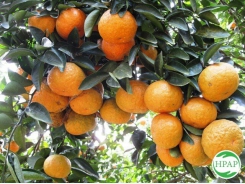Vietnam rice farmers in a sticky situation

Production of sticky rice in the Mekong Delta over the past weeks has faced challenges due to China’s new import tariff policy, forcing a strong reduction in the price of sticky rice at home and in export markets.
Rice is stored at a Dong Thap Food Co warehouse. Half of Viet Nam’s rice volume exported to China has been sticky rice in recent years.
According to Do Ha Nam, general director of Intimex Group JSC, China’s Ministry of Finance announced an increase in the import tax on rice to 50 per cent from July 1, 2018, including sticky rice. China’s sudden announcement had a huge impact on the export performance of enterprises.
Half of Viet Nam’s rice volume exported to China has been sticky rice in recent years. The change in China’s import tax policy has pushed local businesses to delay exports of thousands of tonnes of sticky rice that were ready to ship to this market. They must now reduce selling prices or stockpile the product.
Nguyen Van Don, director of Viet Hung Co Ltd, one of the enterprises specialising in exporting sticky rice to the Chinese market, said due to the new policy, local enterprises could not increase the volume of their sticky rice exports to China.
In this case, local enterprises do not want to pay import tax of 50 per cent, so they must buy a quota because enterprises with import quotas and countries joining the most favoured nations (MFN) will not impose the new import rate.
However, Don said buying quotas will increase the cost of imports up to US$120 per tonne, so the Chinese importers only buy when the sticky rice price is low or they will accept high prices when demand increases in the local market.
At present, the sticky rice inventory of Chinese enterprises is still high, so they buy small volumes or at very low prices.
On the other hand, the US-China trade war has no direct impact on the rice sector, but affects the general sentiment of Chinese enterprises as well as China’s import and export activities. Therefore, exports of sticky rice of Viet Nam can be difficult.
Chinese firms have pushed for a reduction in Viet Nam’s price of sticky rice to $380 a tonne, while sticky rice in the domestic market is traded at VND8,600-8,800 per kilogramme or $374-$383 per tonne. They must sell at $400 per tonne to break even.
An export price of under $400 per tonne of sticky rice is also the lowest level in the past two years, and marks a sharp fall from the beginning of this year when the price was at $530-$540 per tonne, bringing profit for both businesses and farmers.
China’s recent change in import tax policy on the local rice industry is not its first. A year ago, China also changed its policy of importing sticky rice from Viet Nam, which had an big impact on local enterprises’ sticky rice exports, although the tariff then wasn’t as high.
In recent years, China has become a major export market for Vietnamese sticky rice. China has promoted the import of sticky rice with high prices, leading to a strong increase in the area producing sticky rice in the Cuu Long (Mekong) Delta region.
According to the Viet Nam Food Association (VFA), Viet Nam exported 1.4 million tonnes of sticky rice in 2017, with 90 per cent shipped to China. There is a high risk with exporting a large volume to one market, and warnings were issued about this situation.
However, reducing the sticky rice growing area is not easy because the farmers maintain production with the belief that the export price of sticky rice will recover in the future, said Dang Thi Lien, director of Long An Food and Foodstuff Co.
In this situation, experts said the Cultivation Department and localities need to monitor more closely the structure of cultivated rice, avoiding any increase in the growing area in the autumn-winter crop.
In addition, businesses should also try to expand the export market for sticky rice to other countries, especially those in the Middle East and other Southeast Asian nations, to avoid overdependence on the Chinese market.
Related news
Tools

Phối trộn thức ăn chăn nuôi

Pha dung dịch thủy canh

Định mức cho tôm ăn

Phối trộn phân bón NPK

Xác định tỷ lệ tôm sống

Chuyển đổi đơn vị phân bón

Xác định công suất sục khí

Chuyển đổi đơn vị tôm

Tính diện tích nhà kính

Tính thể tích ao




 Fruits and vegetables export is slowing down
Fruits and vegetables export is slowing down  Hai Phong works to develop value chain for…
Hai Phong works to develop value chain for…